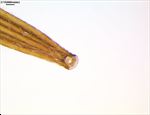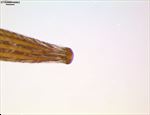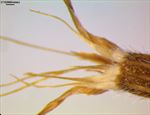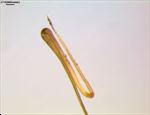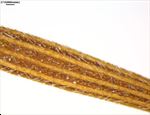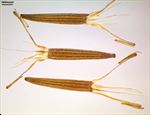Taxonomy
Pseudelephantopus spicatus (Juss. ex Aubl.) Rohr, Skr. Naturh.-Selsk. Kjb. 2: 214. 1792, 214, 1792
Common synonyms
Ageratum dubium Blanco; Ageratum quadriflorum Blanco; Distreptus nudiflorus Cass.; Distreptus replicatus Cass.; Distreptus spicatus (B.Juss. ex Aubl.) Cass.; Distreptus spicatus var. interrupta Ram. Goyena; Distreptus spicatus var. nicaraguensis Ram. Goyena; Elephantopus colimensis Sessé & Moc.; Elephantopus dubius Blanco; Elephantopus littoralis Sessé & Moc.; Elephantopus spicatus B.Juss.; Elephantopus spicatus B.Juss. ex Aubl.; Elephantopus spicatus var. densiflorus Kuntze; Elephantopus spicatus var. flavidus Kuntze; Elephantopus spicatus var. laxiflorus Kuntze; Elephantopus spicatus var. lilacinus Kuntze; Elephantopus spicatus var. roseus Klatt; Elephantopus strigosus Willd.; Elephantopus strigosus Willd. ex DC.; Matamoria spicata (Juss. ex Aubl.) La Llave & Lex.; Pseudelephantopus spicatus (B.Juss. ex Aubl.) C.F.Baker; Pseudo-elephantopus spicatus (Juss. ex Aubl.) Gleason
Common name
Dog’s-Tongue
Description
Propagule or dispersal unit is the fruit with pappus. Fertile part 5-6.5 mm long, 0.8-1.2 mm wide, in side view widest in upper part (obovoid), +/- straight, the upper (apical) end suddenly cut off (truncate), in cross-section flattened, basal scar (carpopodium) pronounced and well-differentiated, off to the side (oblique) or at least asymmetric, beak (=thinner sterile stalk between seed and pappus) absent, wings absent, fruit surface light brown or straw, smooth (except at cellular level), with glands or glandular hairs, thickened margin absent, longitudinal ribs present, (8-)10(-11), their surfaces smooth, with simple straight hairs.
Pappus type bristles / hairs or awns or spines (depending on interpretation of the longest two elements), pappus elements clearly differentiated into two longer and several shorter ones, up to 4-5.5 mm long, in one row, number of pappus elements six to ten, persistent, the individual bristles rough / serrated (barbellate), clearly wider at base, brown, the two longer ones hooked at end, +/- divergent, +/- straight.
Ecology
Perhennial herb spreading with underground rhizomes, seeds with hooked pappus bristles that appear to be adapted to getting the seed pulled off the mother plant by passing animals. Tropical regions. Found on sandy soils, in forest clearings and along roads.
Native range
Florida, Mexico, Central America, Caribbean, northern South America.Introduced range
Wet tropical West Africa, southeastern Asia, wet tropical Australia, Pacific islands.
